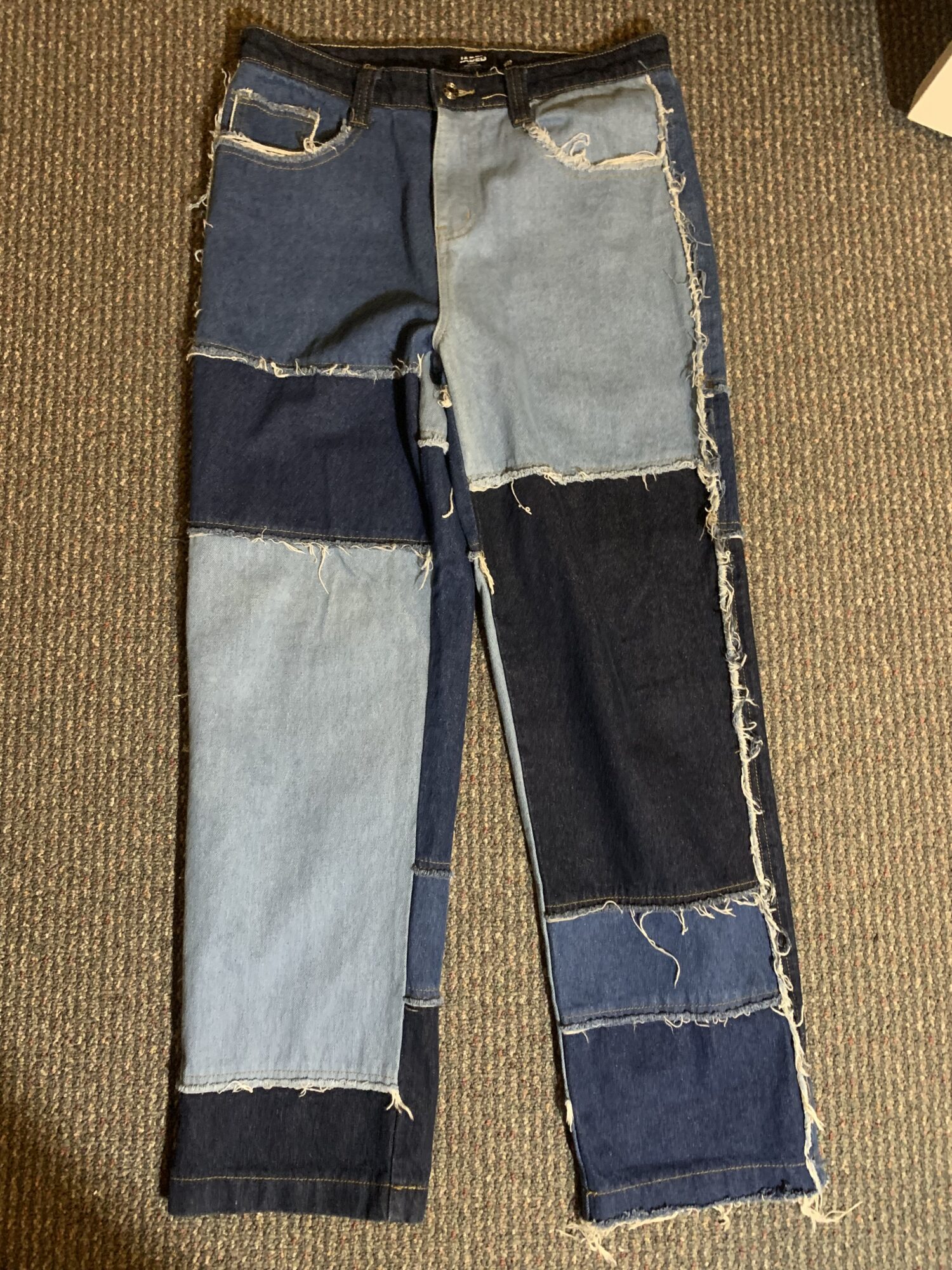Patchwork is a technique that involves sewing together small pieces of fabric to create a larger design. Its roots date back all the way back to ancient times when it was a technique for quilting together pieces of fabric for clothes, drapes, and even armor [1]. The pieces of fabric typically are cut into basic geometric shapes and sewed together into a repeating pattern, or sometimes to make up an image.
The technique experienced a revival in the United States during the Great Depression when it was used to recycle old clothing into quilts [2]. Despite its rich history, patchwork only started to be recognized as a fashionable aesthetic during the 1960’s thanks to the hippie movement [2]. The appeal of patchwork pieces was its handmade look, a result of a collection of unique and bright colored fabrics that communicated the wearer’s individuality, freedom, and personality, which was a contrast to the “cleaner” look of mainstream fashion.
While the fashion movement was meant to be a counterculture, the patchwork look eventually made it to high fashion. For example, designer Thea Porter took inspiration from a kaftan (a common garment worn in Turkey and Morocco) when she lived in the Middle East during the 1960s. Her kaftan was made with a patchwork of antique fabrics and luxurious silk [2]. This type of patchwork garment could then only be afforded by the affluent.

Similarly, Gucci, despite being a luxury brand, wanted to emphasize a “handmade” feel with their 2007 spring/summer bag by integrating patchwork elements [2]. While this is proof that the patchwork aesthetic is alive and well even in the 21st century, its prominence in high-fashion speaks to how the aesthetic has transformed from its humble origins as a economical technique for reusing fabrics.

Recently, my brother was doing some spring cleaning for his bedroom. For me, that means new clothes! Because my brother has a bigger frame than me, a lot of his clothes can be a do-able, “oversized” fit. However, the biggest shame has always been that his jeans rarely fit. Luckily, one pair of his jeans did fit, and taking inspiration from its patchwork aesthetic, I wanted to repurpose his other jeans into a tote bag that I could use!

For the pair of patchwork jeans, I really like the contrast of the different washes and the different-sized patches even though it relies entirely on denim fabric. Therefore, I will also like to stick to only using denim fabric and utilizing varying washes and sizes of patches to create an interesting pattern.

The tentative vision is as follows:
- Create a tote bag by upcycling my brother’s jeans
- Use varying sized rectangles to create the patchwork entirely of denim
- Keep elements of the jeans (ie. pockets, buttons, belt straps, etc.) to give homage to the bag’s original form as pants and to also make the bag pop more
I am excited to explore the patchwork aesthetic, as I could potentially take on future projects and create more useful/aesthetic pieces from clothes my family no longer values.
References:
[1] “Patchwork.” Wikipedia, https://en.wikipedia.org/wiki/Patchwork
[2] “Patchwork Fashions.” Victoria and Albert Museum, https://www.vam.ac.uk/articles/patchwork-fashions


5 Comments. Leave new
[…] Upcycle Aesthetic […]
Hello Helen,
I think you have a really interesting concept for your project, your post caught my attention because I am also looking to upcycle a pair of jeans. It is a creative idea to use various washes and pairs of jeans to create a new object. Your concept seems very solid and your Patchwork Aesthetic will provide a pleasing take to it. On the other hand, are you planning on only using denim in your bag or will you incorporate different fabrics and elements like in the pictures included? I think if you tried to incorporate a focal piece in your project it would make it even clearer to understand. Good Job!
Hi, Emilee! I also gave your post a read even though I did not post a comment, and your project looks so fun! I also wanted to do something similar to your aesthetic of cottage core by possibly sewing on some lace or floral-patterned patches. However, I don’t have much experience with sewing with a machine and especially not with a thicker fabric like denim, so I feel the bulk of my time will be taken up with just learning that new skill set. For now, I think I will stick with just denim, but I agree that a focal piece would make my project clearer. To emphasize the idea that I reused old jeans, I’m thinking of making the biggest patch a section of the jean with a back pocket and maybe salvage more details on the jeans to make it more thematic.
Hi Helen, your project sounds really cool and I like that you’re trying to repurpose old jeans into something new that you would use. I like that you’re focusing on color patterns to add an extra interesting element to the purse. I was curious if you were also thinking of adding any extra pops of color or embroideries to your purse that could stand out from the jean material?
Hi, Kyra! Thanks for the suggestion. I agree that adding more elements to my tote would make it a more interesting piece. I wanted to include some lace or cute buttons as details, but my brother’s old clothes lack those materials. It may call for checking if my mom has some old clothes she is planning to get rid of for those elements. However, for now, I am trying to stick with the denim material. To make the bag more interesting, I am attempting to keep some of the jean’s detailed element, such as using the jean pockets, reattaching the buttons, using the belt loops, or using the waistband for the straps.